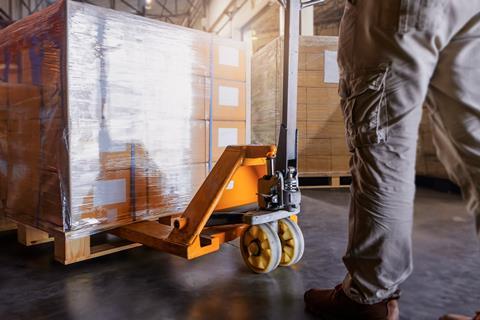
With so many consumers believing plastic is public enemy number one, it’s no surprise many retailers and brands are taking steps to reduce their reliance on the material.
In April the pressure will mount further when the new plastics tax comes into force. Government plans to tax UK businesses £200 per tonne of plastic that does not contain the minimum 30% recycled content. It applies to importers or manufacturers of more than 10 tonnes of plastic packaging and bio-based, biodegradable, compostable and oxo-degradable plastics are all in the scope of the tax.
Whilst many see this as a tax that will penalise food and drink companies, it is also an opportunity to improve the industry’s environmental performance by reducing thousands of tonnes of unnecessary ‘hidden plastic’.
What many businesses have failed to realise is that the tax applies to pallet wrap and stretch film as much as it does to PET bottles and HDPE yoghurt pots. This ‘hidden plastic’ is often overlooked when businesses first start to look at ways of reducing their plastic usage.
So, if you use pallet and shrink wrap film, now is a good time to start making the necessary changes to help you adapt and hopefully avoid unnecessary tax.
We estimate UK businesses use 150,000 tonnes of stretch wrap a year and this could be reduced by at least 45,000 tonnes per year, reducing tax liability by almost a third.
By using excessive amounts of pallet wrapping and the wrong materials, too many businesses are missing an opportunity to improve their environmental performance and save money. So how can you ensure you’re not using more plastic than necessary?
The first step is to identify opportunities for improvement through thorough analysis of current practices, then optimise your machinery and packaging materials as required. For example, multi-layer nanomaterials, which can stretch up to 50% further without compromising strength or puncture resistance, provide superior stability using less plastic. Making the switch is usually a matter of making a simple adjustment to existing machinery.
But often a more important approach is to take your people with you on the sustainability journey. Inexperienced staff tend to compensate by using more pallet wrap than is needed to ensure stability. This is a very common issue we come across: the careful balancing act of maximising the amount of product per pallet with minimum quantities of wrapping and without compromising stability is a tricky one. But if pallets are stacked optimally and the right wrapping material is used for the job, excessive wrapping can be avoided.
You may be thinking about switching to recycled pallet wrap as part of your sustainability plan. But be aware this can be expensive, and is already increasing in price as demand increases ahead of the introduction of the tax.
Finally, make sure you dispose of the plastic wrap you do use responsibly. Used pallet wrap can be recycled, and many companies don’t realise that, as well as recycling being environmentally responsible, you can get good money for packaging waste. If your factory produces a lot of plastic waste, look at baling and recycling it. It’s an investment that pays off very quickly and is far better than sending waste to landfill.
Pallet wrap may only seem like a small part of your overall plastics usage, but studies with our partners show transit packaging improvements can achieve a 53% decrease in packaging waste. Clearly there are long-term gains to be had for the environment, as well as your brand and corporate image, and ultimately the bottom line of your business.



















No comments yet